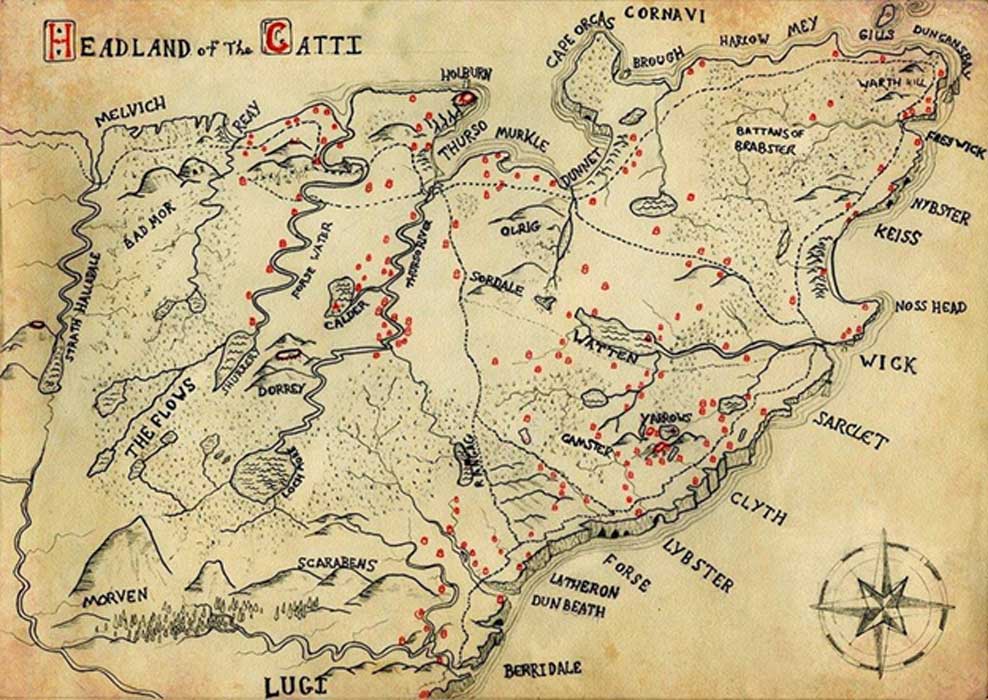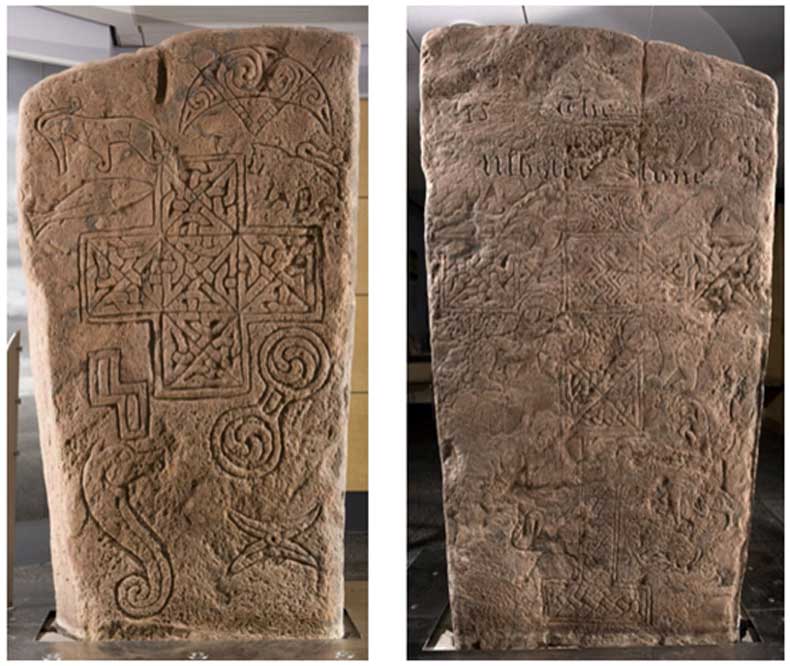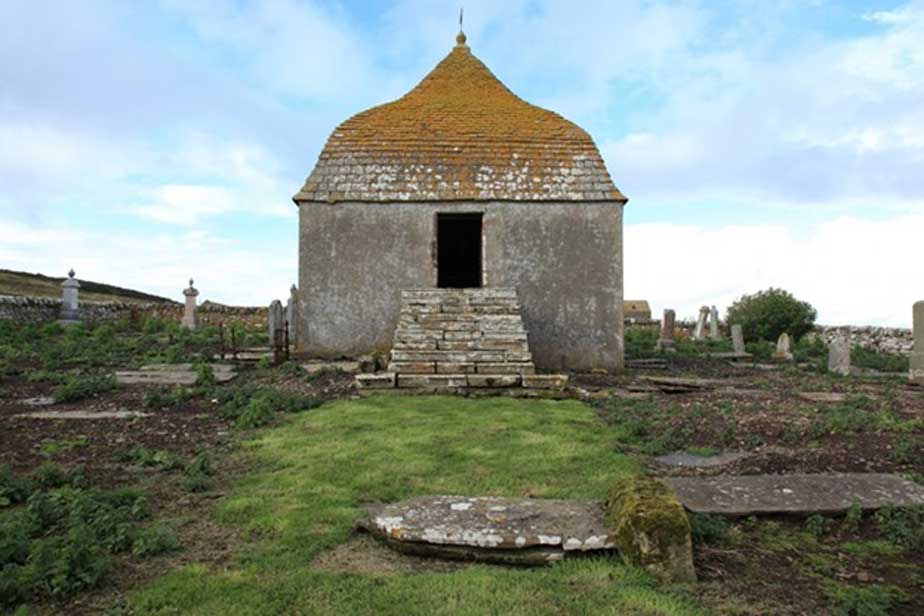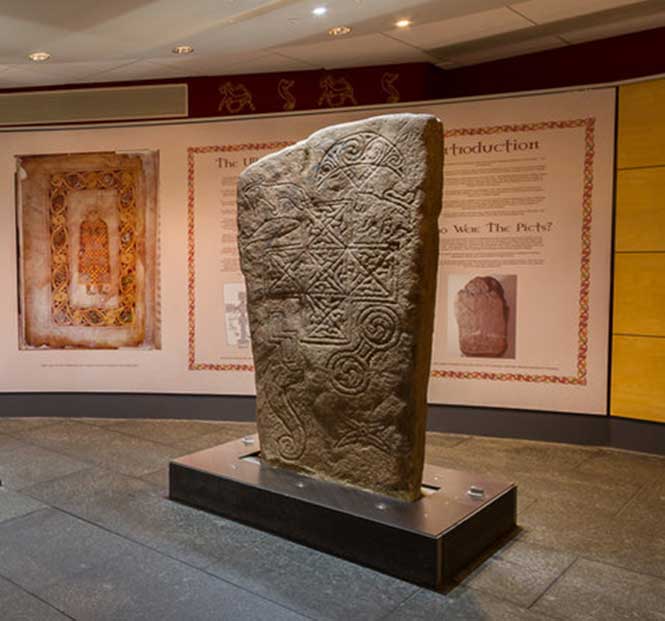
Botanical Mystery of the Ancient Ulbster Stone
A 1,500-year-old carved marvel, the Ulbster Stone, was unearthed from the grounds of an ancient Celtic chapel in the remote Highlands of Scotland and is renown to have more symbols than any other Pictish monument. Severely faded and almost lost midst a dreamlike arrangement of curiously carved imagery, is a unique symbol that has been categorized by archeologists as a flower. Several archeologists may dispute this, proposing that this symbol actually represents three psilocybin mushrooms, better known as magic mushrooms, suggesting the early Celt’s in Scotland might have been much closer to Mother Nature or heaven than is currently thought.

The Ulbster Stone, partially incised and partially in relief. (Reproduced courtesy of Caithness Horizons Museum and Art Gallery, Thurso)
The county of Caithness is located on the north east coast of Scotland and has been inhabited since about 8000 BC, when hunter gatherers paddled northwards up the fish-rich, post-Ice Age, rivers and costal firths. The first farmers evolved around 4000 BC and by the 6th century AD Pictish farmers welcomed the first Celtic Christian missionaries with their Goidelic, or Gaelic, languages. By cleverly aligning with the powerful Pictish rulers of the north, the Celtic missionaries did not aim to overthrow Pictish beliefs, symbology and traditions, but over time they demonstrated that just beyond the Pictish pantheon of gods, was an omnipotent One God, who ruled all creation. The semi-integrated Pictish-Christian culture of Caithness was brought to a bloody end by Viking raiders in the 9th and 10th centuries who came to dominate Caithness until the arrival of Norman knights in the 12th century.
Located about seven miles south of Wick on the A9 road, an abandoned crofting hamlet called Ulbster was once managed by a branch of the Sinclair Earls of Caithness, most famously Sir John Sinclair, the highly achieved statistician, who wrote the pioneering 1884 Statistical Accounts of Scotland. The Sinclair family built a family burial mausoleum at Ulbster on a patch of land, which once housed an Early Medieval place of worship - St Martin's Chapel. Bearing the date 1700 on a wind vain on its roof, scholars such as Oliphant and Thomson maintain that the mausoleum is the converted remains of the chapel.

The Sinclair burial mausoleum at Ulbster is located upon the foundations of St Martin’s Chapel and was built using its stones. Location: 58° 21′ 31.57″ N, 3° 8′ 12.12″ W. CC BY-SA 2.0 (Doug Lee / CC BY-SA 2.0)
It was within the walls of this burial mausoleum that the 8th century Pictish cross-slab - the Ulbster Stone - was recovered. Measuring 1.52 meter (5 feet) high, 0.91 meters (7 ½ inches) wide and 0.20 meters (3 feet) deep, it was crafted in old red sandstone and is currently on public display at Caithness Horizons Museum in Thurso. Scholars in 1856 tell us: “the stone was dug up in the churchyard of St Martin’s Chapel at Ulbster in 1770, set upright and later re-used as a grave slab” and authors Allen and Anderson recorded in 1903 that this “magnificent stone was moved to Thurso castle in the 19th century and set upright on an artificial mound in the grounds.”
Reading the Ulbster Stone
Defined as a “class II symbol stone” the Ulbster Stone is highly unusual. According to historian Ian Bradley in his 1993 book The Celtic Way, the Ulster Stone bears two crosses, which to Bradley is so unique, that he went so far as to suggest the semi-mythical 8th century St Ninian, the brave Celtic Christian missionary among the Pictish peoples of what is now Scotland, might even have personally founded this church at Ulbster.





